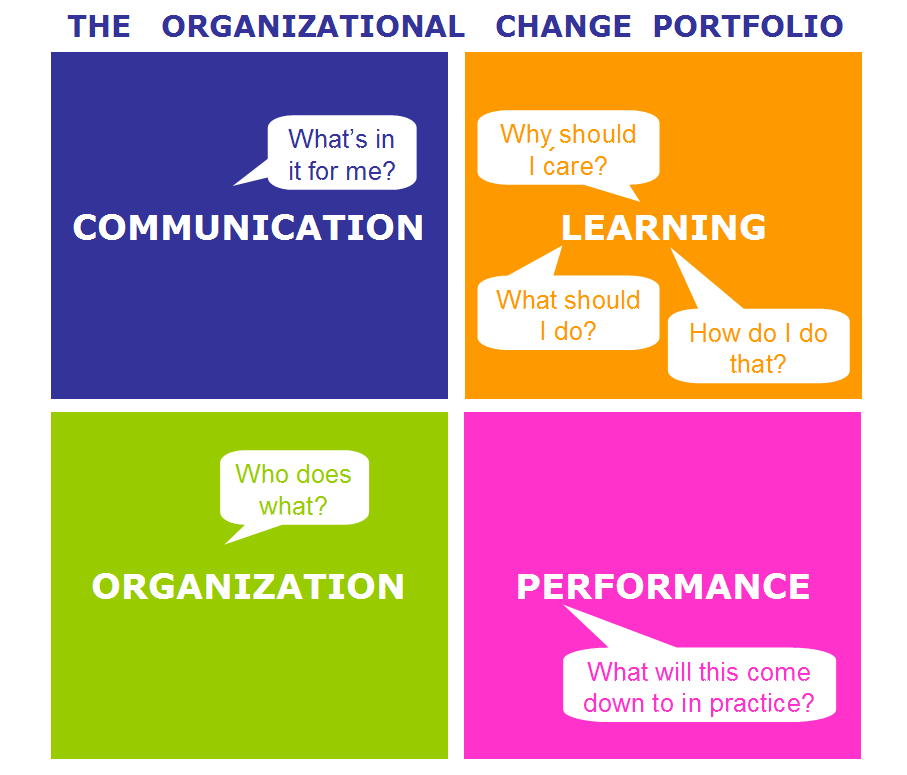Last week I was a few minutes early on the steering committee of a huge SAP implementation. As we were joking around we came to the subject of ‘change management’. One person mentioned that some consulting companies abbreviate it as ‘CMS’, which alternatively translates as “Chicks Making Slides”. I had no evidence to prove him wrong. So I decided it is time to work on a brave new change management portfolio.
All sorts of examples came to the surface that confirmed the “Nice-to-have” brand that is tattooed on the back of each change management team as they start off. Finally, just before the meeting started, an experienced and seasoned program manager summarized it as ‘wellness’. I gave it the biggest of grins. However, as much as I appreciated the pun, to the same extent I could not provide evidence against it. Painful….
So this one is for all of us who want to endeavor in the domain of change management and take their profession as seriously as I do. If we want to avoid the ‘wellness’ stamp or the ‘nice-to-have’ connotation, we better get our act together!
The ‘act’ to my opinion is composed of four pillars, or ‘containers of work’ as I often call them. In the context of a project or a program these are ‘streams’ that last from the startup until the very last phase of a project. Each of these project streams has a benefit that is defined in terms of the project’s return on investment.
They are:
- The Communication Stream:
The purpose of this stream is to grow the program during its complete lifecycle. This does not mean project propaganda but a clear answer to the question who are we? And what’s in it for me? The process of communication is one of social construction of a new reality in the hearts and minds of all stakeholders. You manage perceptions of what is going on.
Major communication activities include:
– Segmentation of your target population (yes: you will need a database!);
– The mix of communication channels, and
– Building platforms and opportunities to interact. - The Learning Stream:
Note that this stream is called ‘Learning‘ and not ‘Training‘, because the activities in this stream go way beyond the classroom. This stream aims to upgrade the skills and knowledge of the organization. Learning deals with three questions at the same time: ‘1. Why should I care?; 2. What is the one thing I need to know?; 3. How should I do it ?’.
The main outcome is not only the knowledge but most of all how it is used and shared at the right time and to the proper extent.
Major learning activities include:
– Building communities of knowledge;
– Making it easy for people to share knowledge, and finally
– Training organization. - The Organization Stream:
Essentially, this is the question ‘Who does what?‘ 99% of organizational changes result in a change of responsibilities an accountabilities. The purpose of this stream is to define and implement these new structures, responsibilities and accountabilities. The overall objective is to refreeze a new organization structure that matches the operations to the objectives of the change.
Therefore the major organization activities include:
– Role definition and assigning;
– Organization redesign;
– Setup of a support structure. - The Performance Stream:
This is where the rubber hits the road. People will ask you: ‘What will this come down to in practice?’. The purpose of this stream is to implement the new ways of working. Also, every reinforcement mechanism that is put in place belongs to this stream.
Major activities here include:
– Physical changes on the workplace;
– Simulations of the future state (be it a system or a way of working);
– The setup of meaningful measurements.
To me, the above portfolio is a bit different than ‘wellness’. Rather I would summarize it as Michael Hammer once did: ‘The soft stuff is the hard stuff‘. I cross my fingers that change management teams all over the world start realizing that they are working with real budgets and that they need to get their act together. If they do, their large scale organizational change programs will no longer be a foggy substance or a nice to have.
From now on there are 4 goals, 4 teams and 4 containers on your weekly status report. To hell with ‘nice to have’!



Pingback: Luc’s Thoughts on Organizational Change » Recent McKinsey Survey underscores the Organizational Change Management Portfolio()
Pingback: The Impact of Social Media on Doing Business | Reply-MC()